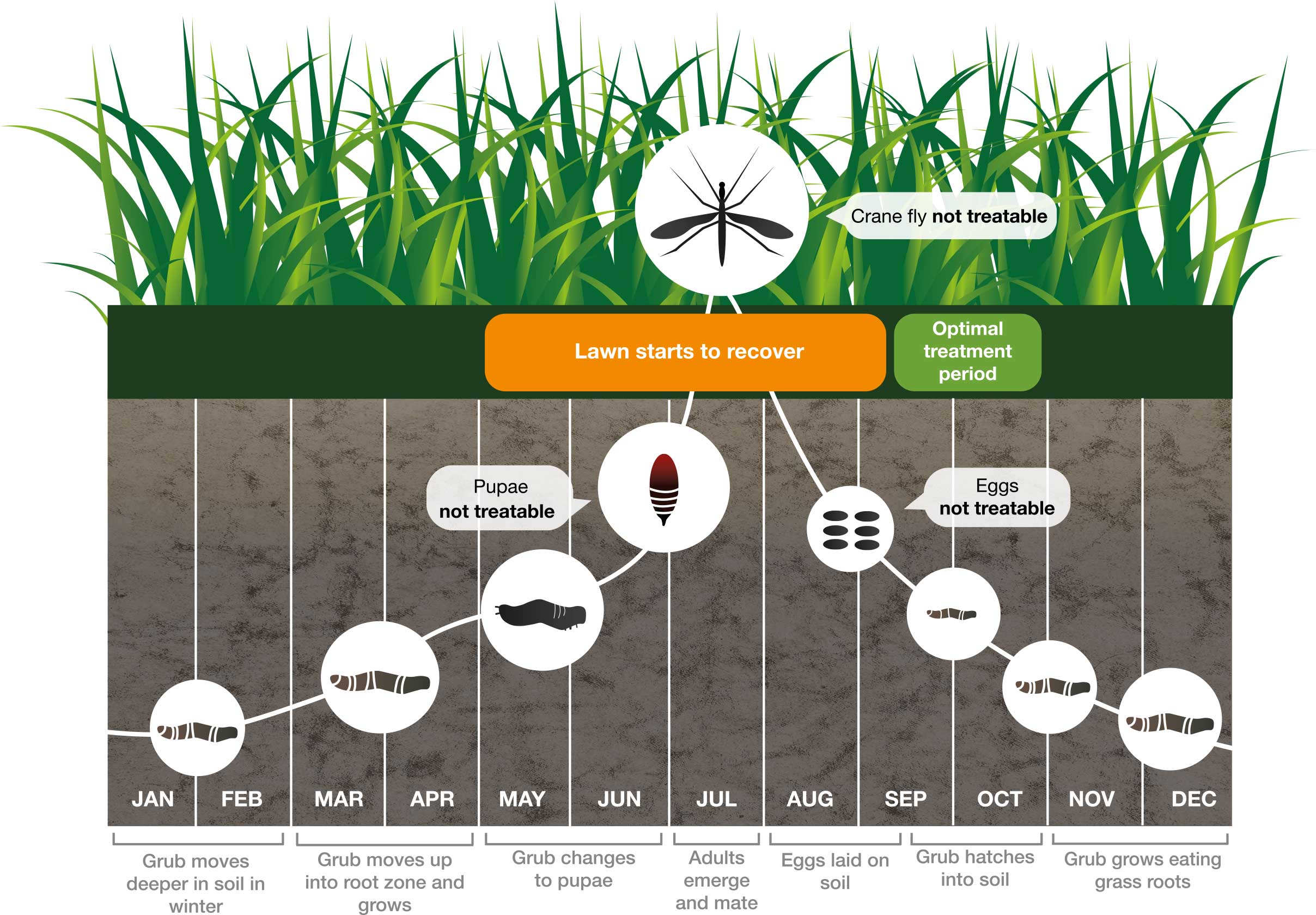If left untreated, Leatherjackets can wreak havoc on your lovely lawns.
What are Leatherjackets?
Leatherjackets are the larvae of flies known as crane flies or daddy-longlegs. So, when daddy longlegs lay eggs in your lawns, the resultant larvae – Leatherjackets, feast on the roots and young shoots causing major damage!
How to tell if Leatherjackets are a problem in your garden:
- Lawns develop patches where the grass turns a yellowish brown and dies. This can be distinguished from similar effects, caused by lawn diseases or adverse growing conditions, by lifting the affected turf and finding Leatherjackets in the surface layers of the soil.
- Crows, magpies, rooks, and starlings will search for Leatherjackets in the turf. These birds will scratch the surface to bring the Leatherjackets up.
- Leatherjackets have elongated tubular bodies, up to 30mm long, and are greyish brown. They have no legs or obvious head.
When should you treat for Leatherjackets? 
The optimal treatment time for Leatherjackets is between mid-September to October.
Leatherjackets usually have a one-year life cycle which starts when the female lays her eggs in the lawn around September, they hatch 2-3 weeks later.
During mild winters, the pests will have grown, and the damage will be much more extensive by February/March.
You will start to notice the Leatherjacket grub coming up out of the lawn. Quite simply, the higher the number of Leatherjackets visible on the surface of the lawn, the larger the infestation.
How can GreenThumb help?
We offer a solution referred to as Pest Management Treatment which is most effective when the grubs are small in late September/October. This treatment is made up of plant extracts and nutrients which alleviate damage when the lawn is under attack.
You should start to see the effects quite quickly from this. Your lawn will look greener as a result; the effects will improve over a month as less damage is visible and your lawn has had time to recover; our regular core treatments will also help to speed this recovery up.
If you suspect you have a Leatherjacket problem (or another pest problem) then please speak to your local GreenThumb branch: www.greenthumb.co.uk/branch.





